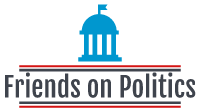One of the best ways to improve the effectiveness of your copy is to include visuals. Not only do visuals impact your copy, but they also provide a better way to tell a story across your website. For example, you can use images to describe a product and include its history.
Good copywriting doesn’t need jargon or hyperbole.
 For a product, service, or website to be effective, it must communicate knowledge and expertise to the customer. It must also be credible and offer evidence that the product or service can deliver on its promises. Good Nicholls Web Consulting copywriting Adelaide avoid jargon or hyperbole.
For a product, service, or website to be effective, it must communicate knowledge and expertise to the customer. It must also be credible and offer evidence that the product or service can deliver on its promises. Good Nicholls Web Consulting copywriting Adelaide avoid jargon or hyperbole.
Jargon can be a slippery slope. It can be an asset to make your copy sound more professional, but it can also alienate readers. If your audience doesn’t know the term can make your writing less persuasive or engaging.
The best way to ensure that your copy is as compelling as possible is to avoid using too much jargon. This way, you increase the chances that a wide audience will read your copy. On the other hand, you can use jargon when writing copy that evokes a specific type of audience or profession. For example, a website about geishas might contain language only they understand.
Jargon creates a sense of distance and makes it difficult for your audience to understand your message. It can even turn off potential students. Jargon is often used by academics who are writing to other academics. However, jargon can negatively affect non-academics because it can obscure the meaning of the words.
It should speak to the reader in human terms.
To write good copy, you have to know what your audience wants. The excellent copy begins before the words are ever written on a page. That means you have to read your readers’ minds and understand what they want. You should avoid using jargon or using words that your readers are unlikely to understand.
To create copy that resonates with readers, you need to use human terms. People are naturally curious and don’t like to read boring descriptions of your product or service. So make your copy as human as possible by adding details to make it seem more real. For example, include the prices and features of your product or service in your copy and use the customer’s perspective when discussing the product’s value.
Your copy should be arranged in sections that work together to keep the reader interested. No part of the copy should be redundant. Every sentence must move the reader forward. Also, it is essential to consider how your prospect will respond to the copy. It will cause them to stop reading if it is tedious or confusing. Therefore, you must write copy that appeals to their needs and interests.
Your copy must speak to the benefits of your product or service. Most people are more interested in the benefits than in the product’s price. Therefore, it must inform, entertain, and inform them about the benefits. It must be easy to understand, and the benefits must be apparent. Both short and long-form content can convert if done correctly.
It should include a strong call to action.
A compelling call to action (CTA) is one of the most crucial parts of Nicholls Web Consulting copywriting Adelaide. It urges the reader to take action. It should be clear, direct, and include strong action verbs. The best CTAs make it easy for readers to take action. A strong call to action is also essential to creating a compelling sales message.
Calls to action are essential to any marketing campaign, whether email newsletters or landing pages. An effective CTA can change the course of a prospective customer’s purchasing process and make the difference between a bounce and a conversion. While CTAs are often small, they can have a huge impact on the success of a marketing campaign.
Your call to action should be straightforward. For example, you shouldn’t write a long copy about why you should choose a product; you only need to ask your readers to answer a simple question and tell them how to take action. A more complex approach would not work in a digital campaign, targeting familiar users who want instant results.
It should also be actionable, not passive. Make sure you state the benefits of your offer, using words such as Get, Subscribe, Save, or Try. An excellent example of an actionable call to action is a popup that offers a whitepaper for growing an email list. It includes a personally submit button, but the second popup tells visitors what they can expect from signing up. It also contains a decline link, which prompts the reader to rethink their decision.
